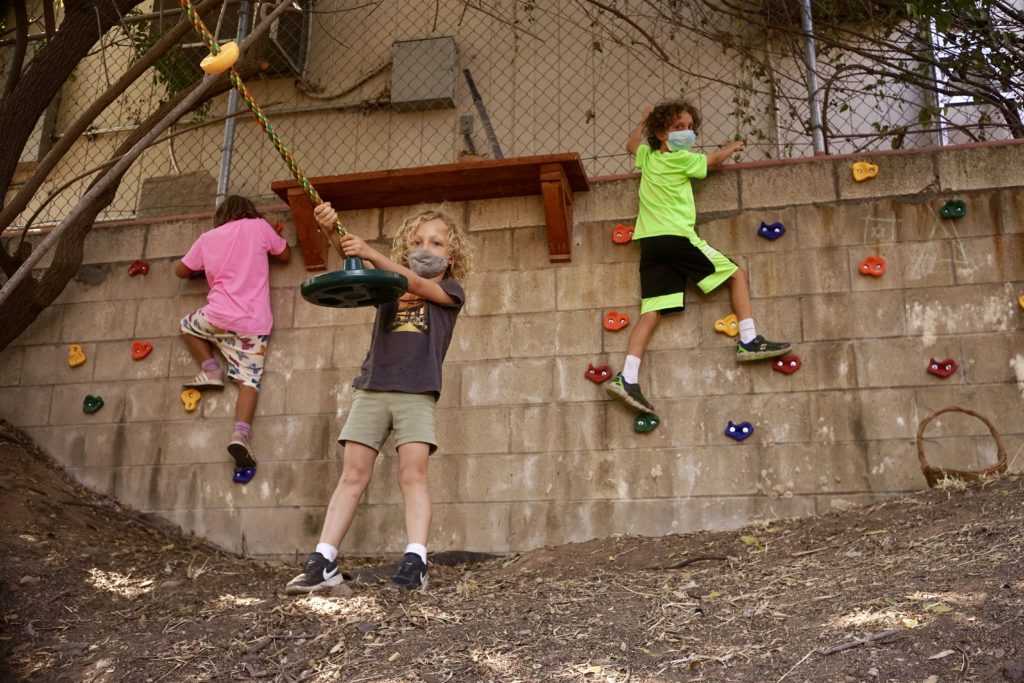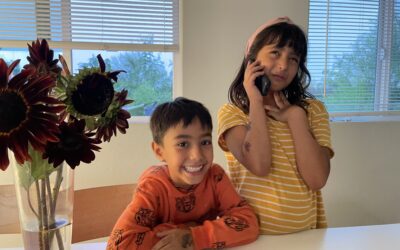The New York Times recently published a story highlighting how schools across the US are creatively balancing in-person schooling with the absolute need to minimize or remove the danger of COVID-19 infection. Clearly, it’s not easy, and the emphasis on public health is priority #1. But the creativity of it all makes one optimistic that not only can schools benefit from emulating the outdoor school classroom approach, but may even transform how schools can integrate nature and the outdoors into their learning environments for generations to come.
Waldorf education and curriculum tend to incorporate the natural world in many ways, so the transition to outdoor classroom space feels, well, natural.
Our indoor physical classrooms are often colorful and have beautiful chalkboard art, but the move to outdoor space allowed for our San Diego-based campuses to adapt and reach a new potential. After moving to remote online learning in March 2020, The Waldorf School of San Diego engaged organizational leaders, including an epidemiologist, to design a safe way to bring students back on campus.
At the start, the only thing consistent was uncertainty. But after many conversations and the adoption of many health and safety protocols by faculty, staff, families, and children, the school has been able to welcome on-campus students since September 2020. The Waldorf School of San Diego County is presently the only Waldorf school in Southern California with full K-12 in-person instruction.
Under the shade of open tents, high schoolers practice their string instruments or advance their robotics team efforts. Younger grades, including preschoolers, are outdoors all day exploring nature and our community garden. This may make the laundry a bit dirtier, but parents are pleased knowing their children are active and able to continue developing socially with their peers in a safe learning environment.

For grades 1–12, our teachers designed outdoor school classrooms using wooden desks, chalk blackboards on wheels, and open-air tents. Being in Southern California does have its advantages, as we do not have to resort to assembling yurt classrooms like nomadic cultures of the Mongolian and Kazakh steppe.
All of this is available because of further commitment to daily health screenings and wearing masks. Some students have opted for homeschooling or virtual learning online education. The biggest thing is that the Waldorf education continues, and with great intention to empower our youth to be ready for anything in the days ahead.




0 Comments